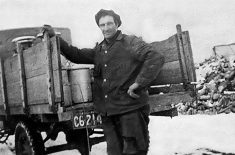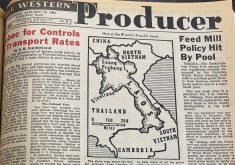Our American neighbours often take it in the neck for their near-pathological aversion to the metric system.
We in the Great White North, of course, bask in our sense of logic and reason, having adopted the metric system in 1975. Or at least we tried to; the official policy of metrification ceased in 1985. (I’ll leave it as an exercise to the reader to look up who was prime minister when each step was taken.)
It’s left us with a weird combination of measures that we grew up with that mentally “make sense” and others that are pretty much meaningless.
Read Also

Kochia has become a significant problem for Prairie farmers
As you travel through southern Saskatchewan and Alberta, particularly in areas challenged by dry growing conditions, the magnitude of the kochia problem is easy to see.
For example, give your body weight and height as 100 kilos and 188 centimetres and you’ll get confusion from most Canadians whose families have been here a long time. But I once gave my metric measurements to a friend who grew up in Europe and he observed, “Gee, you don’t look that heavy.”
Thanks, I think.
One measure that still doesn’t make intuitive sense to me is mileage (or is that “kilometreage?”) The metric version is litres per 100 kilometres, which means nothing to someone who grew up with miles per gallon. Is 11 litres per 100 km good or bad?
The conversion is complicated and there’s a hidden trap: Canadian mpg and American mpg are different because our southern neighbour has its own version of the Imperial system. Their gallon is 128 ounces, or four litres, while ours is 160 ounces or 4.5 litres, roughly.
Then there’s measurement in the field. Bushels per acre make sense to me; tonnes per hectare, not so much.
Making it even more complicated is that a bushel is a measure of volume, while tonne is a measure of weight. So, presumably, one could accidentally leave the tarp off the b-train during a light drizzle to bring those bushels up to optimum weight and make a little money during the night.
Speaking of weight, I doubt many people miss the 100-pound bags of flour and sugar that were once common. About the only thing that’s anything close to that heavy are the 40 kg (88 lb.) bags of Portland cement.
Measurement matters for the sake of your back but much more in the kitchen. Depending on who’s cooking, a cup is a cup or it is 250 millilitres? Our own culinary experts at TEAM Resources offer their recipes with both metric and Imperial on our Farm Living pages.
Of course, for some measures, clarity is not what we’re after. The next time someone asks, I’ll tell them I’m 15 stone seven. That should do it.

















